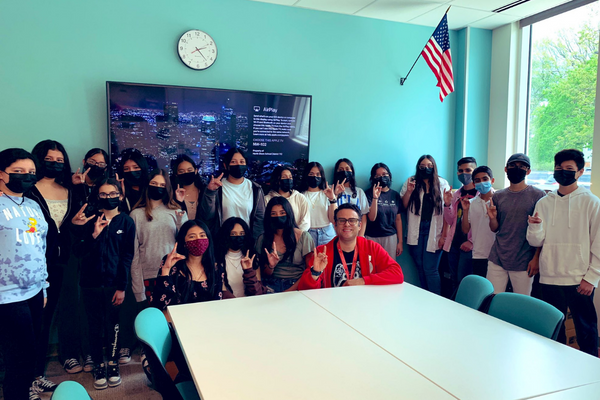As our schools see increasing enrollments of Latino students, one thing many of those students aren’t seeing is school leaders who look like them.
Latina leaders are especially underrepresented—something that Sonia Ruiz is keenly aware of. Ruiz, who is starting a new position as principal of Jane Addams Middle School in Bolingbrook, IL, this school year, believes that school leaders of color bring what she calls a “different lens” to the job that can help students to relate to the principal in a more personal way.

Photo courtesy of Sonia Ruiz.
“I had a couple students this year who actually acknowledged that and said they had never had a Hispanic principal and how cool that was to them,” she says.
Ruiz also has shared her own story—a Mexican immigrant who spoke only Spanish when she started school and is now on her way to earning a doctorate—to inspire her students to set their own ambitions high. “One kid said to me, ‘Oh my God! So it’s really true that dreams can come true here!’ You can talk abstractly about reaching a goal, but when they see that somebody like them has already reached it, it becomes more attainable to them.”
Efrain Martinez, principal of Northwood Middle School in Highland Park, IL, is similarly dedicated to showing all of his students—and Latinos in particular—that “regardless of where you’re at in terms of life’s difficulties, it’s your responsibility to take action and look for ways to improve.”
As we celebrate National Hispanic Heritage Month (September 15–October 15), neither Ruiz nor Martinez focus much of their schools’ curricula on the specific celebration. For one thing, Martinez notes, it coincides with the beginning of the school year, which is already packed with many events. But more than that, he works with his teachers to make sure they are “culturally competent” when it comes to teaching different content to students of all backgrounds throughout the year. Teachers with that cultural awareness are always better teachers, he says.
Ruiz wants her school to look more broadly at U.S. history. “We often talk about an event in history only on the surface without looking at how it affected different people,” she says. For example, where were Latino people when the Civil War happened, and how did it affect them and their land? “Until I went to graduate school, I didn’t realize how much of our history we don’t know because we don’t talk about it,” she says. “We should be celebrating all of our history and looking at where everyone comes from and how that helped make the United States.”
Language barriers and communication are other obvious areas where Latino school leaders can make a huge difference to students and their families. “It’s a great advantage to be able to speak two languages, especially since we have a lot of students who have just arrived here,” Martinez says.

Photo courtesy of Efrain Martinez.
But more than that, it’s important to be aware of how different parents communicate. One obvious step is to make sure Spanish-language materials are available, but Martinez also has found that texting can be more effective than email in reaching some Latino families. “We can’t assume that everyone has a computer with email access or the time to read emails. But they do read text messages. It’s important to be aware that communication isn’t always equal, but it can be equitable.”
Regardless of the language, Ruiz and her staff have regular conversations with students, letting them know that the staff is there for them, they believe in them, and they are going to do what it takes to help students achieve their goals. “They don’t have to want to follow in my career path,” she says. “I just want them to aspire and be able to reach the things they aspire to.”
